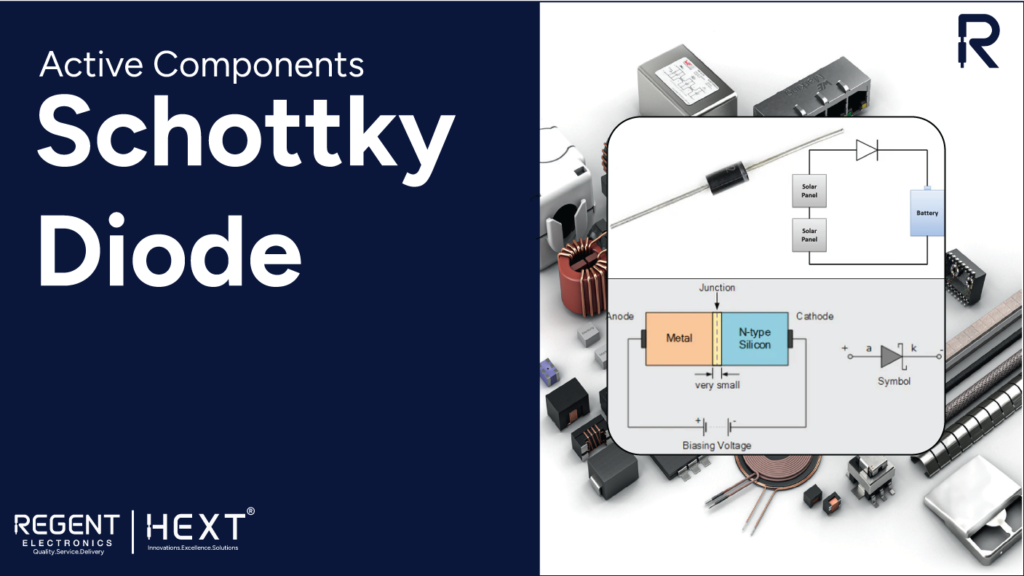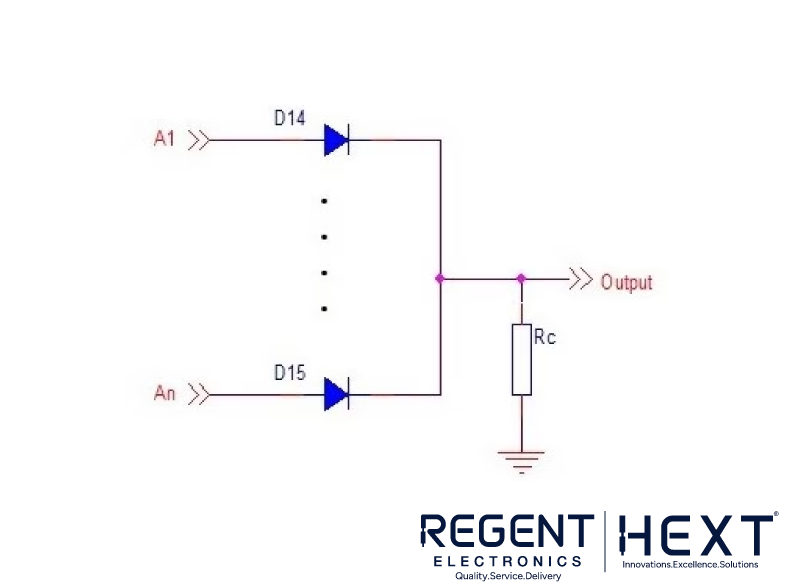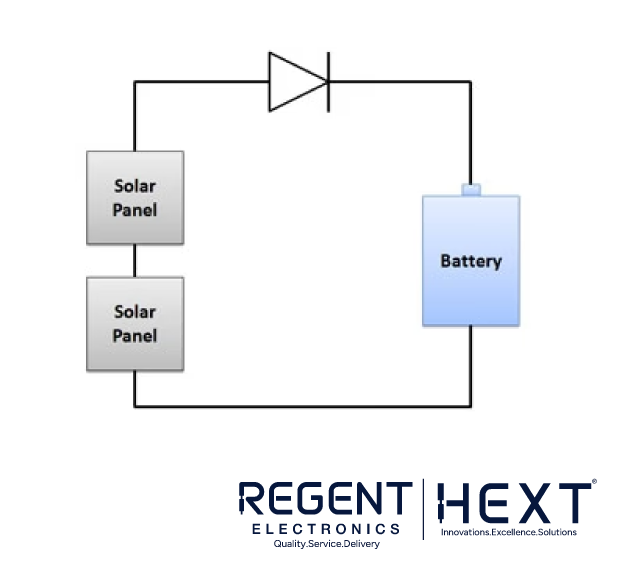
Comprehensive Guide to Schottky Diodes: Applications, Benefits, and Characteristics
Welcome to our in-depth guide on Schottky Diodes. This article is part of our diode series, where we explore various types of diodes and their applications. If you’re interested in learning more about other diodes or the basics of diode functionality, feel free to explore more on our website. In this blog, we will cover the definition, construction, characteristics, advantages, selection criteria, functions, applications, and model numbers associated with Schottky Diodes.

What is a Schottky Diode?
A Schottky diode is a semiconductor device that, unlike typical PN-junction diodes, has a metal-semiconductor junction rather than a semiconductor-semiconductor junction. This unique construction allows it to function effectively in high-speed switching, rectification, and other specialized applications, especially in TTL (Transistor-Transistor Logic) and CMOS (Complementary Metal-Oxide-Semiconductor) logic circuits. The main advantage of Schottky diodes is their very low forward voltage drop, typically around 0.2 to 0.3 volts—much lower than that of traditional silicon diodes (0.7 volts). This makes them ideal for use in low-voltage, high-efficiency applications.
Schottky Diode Construction and Symbol

Unlike a standard PN-junction diode made from P-type and N-type semiconductor materials, Schottky diodes use a metal (often silicide) contact connected to an N-type semiconductor. The absence of a depletion region, which is present in conventional diodes, contributes to their rapid switching capabilities, making them ideal for high-frequency applications.
Key Characteristics of Schottky Diodes

Schottky diodes exhibit unique characteristics that make them highly effective in specific applications:
- Low Forward Voltage Drop: Typically around 0.2V to 0.3V, significantly lower than standard silicon diodes.
- Fast Switching: Schottky diodes have fast recovery times due to the absence of a depletion layer.
- Reverse Leakage Current: Schottky diodes often have higher reverse leakage currents compared to standard diodes.
- Low Power Loss: These diodes are particularly beneficial in low-voltage, high-current scenarios, such as in solar power systems.

Advantages of Schottky Diodes
- Low Junction Capacitance: Schottky diodes have minimal stored charge, which results in low capacitance, improving high-frequency performance.
- High Current Density: Due to their small depletion area, Schottky diodes can handle higher currents at lower voltages.
- High Efficiency: These diodes generate less heat compared to traditional diodes, making them suitable for power-sensitive applications.
- Reduced Reverse Recovery Time: Schottky diodes can quickly switch between ON and OFF states, improving overall circuit efficiency.
Important Parameters for Choosing Schottky Diodes


When selecting Schottky diodes for your electronic projects, keep these key parameters in mind:
- Forward Voltage Drop: Most Schottky diodes have a turn-on voltage around 0.2V to 0.3V.
- Reverse Leakage Current: This can increase with temperature, so consider the operating environment when selecting a diode.
- Reverse Recovery Time: Measured in nanoseconds or picoseconds, it defines how fast the diode can switch between conducting and non-conducting states.
- Capacitance: Schottky diodes have small junction areas, resulting in lower capacitance values, which is crucial for high-speed applications.
Functions of Schottky Diodes
Schottky diodes are versatile and serve a variety of functions in electronics:
- Rectification: Due to their unidirectional conductivity, Schottky diodes are used to convert alternating currents (AC) into direct currents (DC).
- Switching: Their ability to quickly switch between conducting and non-conducting states makes them ideal for logic circuits and electronic switches.
- Amplitude Limiting: Schottky diodes are used in signal processing to limit the amplitude of high-frequency signals.
- Freewheeling: In inductive circuits, Schottky diodes prevent reverse breakdown by releasing residual electromotive force, protecting other components in the circuit.
Applications of Schottky Diodes
Schottky diodes have a wide range of applications due to their unique properties:
- Power Supply Isolation: In dual power systems, Schottky diodes help isolate power sources, as seen in real-time clocks (RTC) and low-power systems.
- AND Gate Logic: Schottky diodes are used to create AND gates in digital circuits, where they ensure that all inputs must be logic ‘1’ for the output to be logic ‘1’.
- OR Gate Logic: Similarly, Schottky diodes are used in OR gates where the output will be logic ‘1’ if any input is logic ‘1’.
- Voltage Clamping: Schottky diodes are used in voltage clamping applications due to their lower voltage drop, which makes them ideal for preventing transistor saturation.
- Discharge Protection: Schottky diodes are used in off-grid photovoltaic (solar) systems to prevent batteries from discharging through the panels at night, known as “blocking diodes.”


Popular Schottky Diode Models and Their Applications
Several commonly used Schottky diodes include:
- 1N58xx Series: These are rectifiers like the 1N581x (1A) and 1N582x (3A) for standard applications.
- BAT54C: A small-signal Schottky diode used in power isolation applications.
- 1N5711 and 1N6263: Widely used in high-frequency applications as detectors and mixers.
Conclusion
Schottky diodes are an essential component in modern electronics due to their low voltage drop, fast switching capabilities, and efficiency. Whether you’re designing power supplies, logic gates, or high-frequency circuits, Schottky diodes offer significant advantages over traditional diodes. By understanding their unique properties, you can select the right diode for your application and enhance the performance of your electronic projects.
For more information about Schottky diodes or other diodes, visit Regent Electronics, your trusted source for high-quality electronic components.
